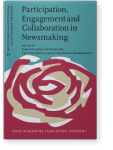Chapter 7
Journalists’ use of social media
A paradigmatic shift towards restoring audience trust through
wide-ranging engagement
This paper shows that journalists are gradually taking
greater advantage of social media and the interactional affordances it
offers. This means, firstly, that journalists can benefit from social media
not only by monitoring conversations, but also by participating in and
initiating them. Secondly, journalists can not only collect information and
identify sources, but also actively ask for them. Thirdly, journalists can
not only distribute their work, but also market it and brand themselves. As
these interactional extensions enable journalists to already engage with
their audience during the newswriting, the paper concludes by discussing the
potential of social media for improving the transparency of journalistic
work and, therefore, for restoring a trusting relationship between the news
media and their audience.
Article outline
- Introduction
- Social media: Scalable sociality of media
- Literature review: A patchy picture of journalists’ social media use
- Data and methods: Theoretical sampling of Finnish journalists’ practices
- Results: Towards a paradigmatic shift in newswriting
- Discussion: Restoring trust through transparency of practices
- Conclusion: Social media is (becoming) an integral part of today’s
journalism
-
Notes
-
References
